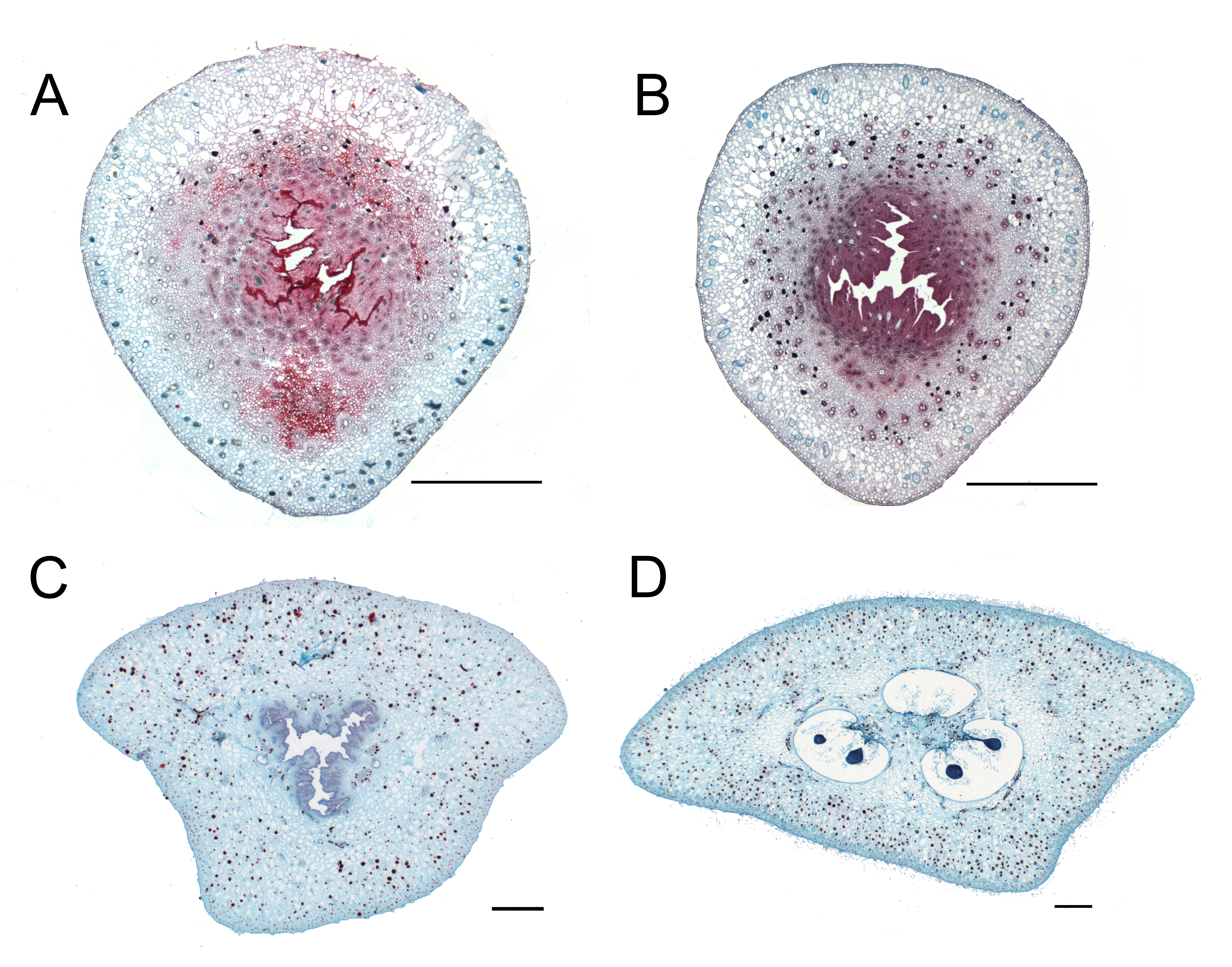USE OF POLYETHYLENE GLYCOL (PEG, CARBOWAX) AS AN EMBEDDING MEDIUM PRODUCES RESULTS COMPARABLE TO PARAFFIN
DOI:
https://doi.org/10.24823/EJB.2021.382Keywords:
Carbowax, Polyethylene glycol, Paraffin embedding, MicrotechniqueAbstract
Polyethylene glycol (PEG) is a non-carcinogenic, water-soluble polymer of ethylene oxide that has found wide applicability in industry and medicine, and has been used to embed and section small animal and plant tissues. Here we investigate the use of PEG for the rapid embedding of larger plant tissues. Ovaries of Musa velutina, Heliconia psittacorum and eight other species were embedded with a mixture of PEG 1450 and PEG 4000. It was found that tissues up to 6.5 × 10 mm could easily be embedded and sectioned in PEG. Embedded tissues could be stored at room temperature for up to 5 days with no detrimental effects. Sections were easily cut at 8–15 μm on a rotary microtome. PEG embedding resulted in equal or better tissue differentiation, better retention of cell inclusions, and reduced shrinkage compared with paraffin embedding. The process was also faster, requiring only 3–6 h compared with the 2 days needed for paraffin embedding. PEG is a rapid-embedding medium suitable for use with even large plant tissues.

Additional Files
Published
Issue
Section
License
Please read our Open Access, Copyright and Permissions policies for more information.

